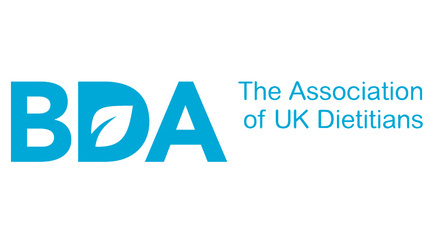Addressing portion sizes with a patient looking to lose weight can be a difficult conversation. Jane Calow looks at some strategies.

Portion size is a critical but often underrated topic in the specialist weight management clinic. It is of central importance to understanding the reasons for an individual’s weight gain but is commonly not recognised as a problem by the patient and is an area that the dietitian may have difficulty addressing.
Picture the scene. The dietitian is taking a diet history at the first appointment for a patient with severe obesity who has been referred for help with losing weight. Mrs Jones is asked to describe a typical day’s food intake. She starts by saying, “Well, for breakfast I just have some toast.”
Let’s pause here for a moment. What is going through your mind about the portion size of this meal? If you are anything like me your first thought is, “That’ll be about two slices,” because that’s the amount I would eat. Here is our first problem. It is tempting to assume the amount our patients eat is similar to what we eat, but this is often not the case. We are all exposed to different influences whilst growing up, which affect the amounts we eat. Some patients may eat half a loaf or more and this is their norm. There can be a vast disconnect between what we and our patients view as “normal”. Dietitians must not assume that our patients eat the amounts we expect, which is often based on the amount we eat ourselves.
Portion sizes are difficult to describe. Statements used to describe portion sizes eaten are highly subjective. Patients may have difficulty verbalising this objectively and will use phrases like “a small portion” or “I don’t eat a lot” or “a normal amount – the same as everyone else”. However, someone with severe obesity may have a very different perception of “a normal portion” compared to their dietitian. The challenge is to elicit further information without making the patient feel more defensive.
Patients with severe obesity are on the defensive when they come through the door because they have so often been judged because of their size. They may be reluctant to disclose the amount they eat. Accuracy of food intake reporting has an inverse relationship with BMI (Braam (1998), Wehling (2017)). Therefore, developing a good rapport and non-judgemental approach is critical for obtaining an accurate assessment. Dietitians are taught to ask patients to describe a typical day’s eating, which may lead us not to probe for details of portion sizes. Portion sizes are difficult to assess – how many slices of toast is an easy question but amounts served at a main meal are harder to estimate. Some patients tell me that they have seen dietitians in the past who have not found anything to change to help them lose weight. One interpretation of this is that the dietitian has assessed the type but not the amount of food the patient is eating.
There may be good reasons for this. Dietitians may be reluctant to ask patients about how much they eat because this means asking lots of closed questions: “How many slices?”, “How many potatoes/serving spoons is that?” This can lead the patient to give oneword answers. It prevents rapport developing and limits the flow of the conversation.
Patients’ views on portion sizes in weight management
Patients often believe that weight management is achieved purely by eating healthy food. This is a view promoted by some commercial organisations such as Slimming World. As dietitians, we know that portion sizes and frequency of eating are equally important.
Some patients may regularly order fast food or takeaway food or eat food outside the home where the portion sizes served are almost always larger than most people need. A takeaway meal for one person usually has enough food for two servings. It is understandable if this then influences the amounts people serve at home. In some families, everyone in the household is served the same amount regardless of their needs, size or appetite. These factors can lead patients to believe that they do not overeat (“I don’t eat more than anyone else”).
Many patients are reluctant to reduce portions because this will be different to everyone else (change is always difficult) or because they believe this will leave them feeling physically hungry or psychologically deprived.
Eating larger amounts consistently may lead to altered perceptions of hunger and fullness. Patients may interpret feeling uncomfortably full and bloated as the norm. Eating less than the amount that achieves this feeling may then be interpreted as not having eaten enough or still feeling hungry.
We all develop habits around the amount we eat. These norms often develop when we are younger and active. If we become less active we need to reduce portion sizes to prevent weight gain; however, habit change is very difficult. In this situation patients often believe that they are living with overweight because they can no longer exercise (a situation which cannot be changed) and can be reluctant to accept that they can reduce portion sizes to lose weight (something that may require considerable effort from them).
Practical issues
Some patients find it helpful to use portion measuring tools when serving meals. However, it takes time to measure the correct portion when serving a meal, during which time the food may be going from hot to tepid. Unless someone is cooking for one it can be tricky to measure the correct portion when preparing a meal.
How can dietitians assess portion size?
Tools available for the assessment of portion sizes eaten include pictures of foods served in different portion sizes (such as in the Carbs & Cals books), a 25cm diameter dinner plate, food models and spoons of various sizes. Many patients eat from larger plates than would be recommended (and the size of plates available has increased markedly over the years). Food models are of limited value because one portion size does not suit all and the portion represented will often be less than would be recommended for someone with severe obesity. A patient can be shown pictures of different portion sizes of a food or a meal and asked to say which is closest to the amount they eat. This may not be particularly accurate but it does show patients what different portion sizes look like on the standard plate and what the difference in calorie content is. It also highlights the importance of measuring portion sizes for the patient.
Dietitians can ask practical questions such as whether someone regularly eats second helpings. They can assess a patient’s insight into their eating habits by asking what they think has led to weight gain, including whether they think eating large portions or eating high-calorie foods has contributed.
Having assessed portion size, what next?
Good practice requires the dietitian to use appropriate language to share the outcome of their assessment with the patient whilst maintaining a good rapport and remaining clinically effective. A fellow professional (not a dietitian) once said he did not ask patients about portion size “because if someone has severe obesity we know they are eating too much”. A more helpful way to frame this for a patient might be “eating too many calories for them in their current circumstances”.
We should tell patients if our assessment leads to the conclusion that their portion sizes are too large for weight loss. If a patient’s reported dietary intake consists mainly of healthy foods and few if any high-calorie foods then their portion sizes must be too large for them to lose weight. We should share this with the patient, explaining that this is the only possible conclusion if their reported intake is correct. We can then ask, “What do you make of that?” to understand their views.
To summarise, patients and dietitians may find assessment of portion sizes challenging. Attempting a detailed portion size assessment may prevent the dietitian from developing a rapport with the patient, who may then disengage from the weight management service. It is more important to understand how the portion sizes a patient eats impact on their overall intake and weight and to share this assessment with them. We can then offer patients different approaches to reducing portions to help them achieve the daily calorie deficit needed for weight loss.
How to help patients to reduce portion sizes
Some of these ideas provide guidance as to recommended portion sizes and some can help patients eat less at meals:
- Use a smaller plate. Portion plates or portion measuring tools can be useful
- Serve half a plate of vegetables or salad first (and only one layer of food)
- Start by choosing meals where portion size measurement is relatively easy e.g. roast dinner with foods served separately rather than a casserole
- Use size guides such as a palm-of-hand-sized serving of meat, or everyday items such as a chequebook-sized serving of fish
- Cook only the amount you need or save leftover food and freeze as soon as possible. Avoid having serving dishes on the table so you are not tempted to have second helpings
- Make a recipe stretch further, i.e. make five portions out of ingredients recommended for four people
- If measuring food portions is difficult, try ready meals containing 500 calories or less served with extra vegetables, to familiarise yourself with what smaller portions should be and how they affect appetite
When reducing portion sizes, it can help to:
- Use smaller cutlery, practise eating more slowly and chew well. Pause part way through a meal and reassess hunger and fullness
- Eat small snacks containing fibre and/or protein between meals to avoid hunger
- Monitor progress with a food diary, an app or tick chart and record portion sizes eaten and the effect on your appetite
- Get support from those around you, e.g. change the whole family to smaller plates
So next time a patient says, “I’m not sure why I’m overweight – I don’t eat a lot,” you may be able to use some new ideas.
Summary
- Accurate assessment of portion sizes eaten is challenging and often unnecessary. Dietitians can assess a patient’s insight into how their portion sizes affect their weight and understand the impact of portion sizes eaten on the patient’s overall intake.
- We should share our assessment of the contribution of portion size to weight gain with our patients. Failing to do so perpetuates the myth that healthy eating is all that is required for weight loss and we risk being clinically ineffective. Where a patient reports only eating healthy foods, after checking we have understood their diet history we must conclude that portion sizes are too large for weight loss and share that with them.
- Patients may not recognise that they overeat and may resist any advice to eat smaller portions. Dietitians must be aware of the many barriers to reducing portion sizes. We can say, “One option is to reduce portions – would that be practical for you?” and reflect back the response. It is important to maintain rapport so that patients continue to engage with the weight management service.
- Where patients are not keen to reduce portions it may help to explain the science of weight loss. We can explain that weight loss of 0.5kg weekly can be achieved with a daily 500kcal deficit and give the patient several options for achieving this, which should include reducing portion sizes.
References
- Braam et al (1998) Determinants of Obesity-related underreporting of energy intake. American Journal of Epidemiology 147:1081-6
- Wehling (2017) People with a body mass index of >30 under-report their dietary intake: A systematic review. Journal of Health Psychology 24 (14) 2042-2059




